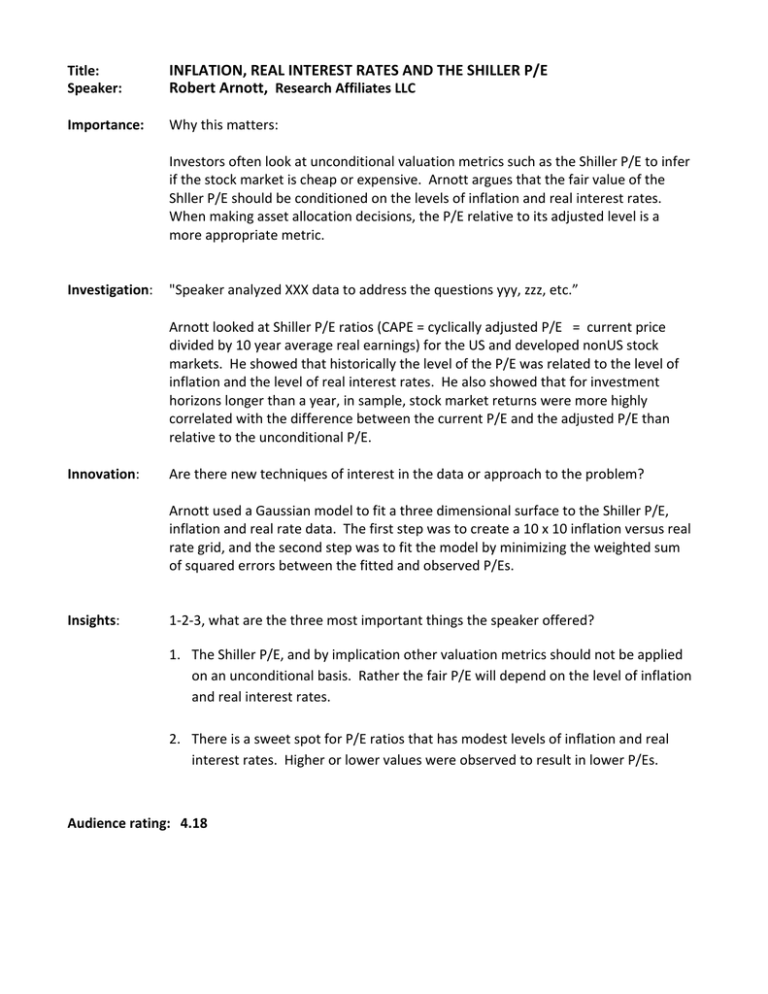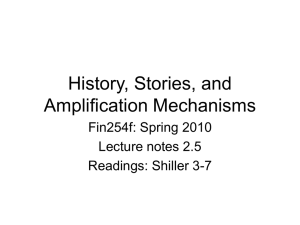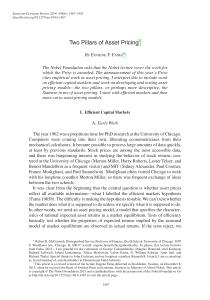Document 13499770
advertisement

Title: Speaker: Importance: INFLATION, REAL INTEREST RATES AND THE SHILLER P/E Robert Arnott, Research Affiliates LLC Why this matters: Investors often look at unconditional valuation metrics such as the Shiller P/E to infer if the stock market is cheap or expensive. Arnott argues that the fair value of the Shller P/E should be conditioned on the levels of inflation and real interest rates. When making asset allocation decisions, the P/E relative to its adjusted level is a more appropriate metric. Investigation: "Speaker analyzed XXX data to address the questions yyy, zzz, etc.” Arnott looked at Shiller P/E ratios (CAPE = cyclically adjusted P/E = current price divided by 10 year average real earnings) for the US and developed nonUS stock markets. He showed that historically the level of the P/E was related to the level of inflation and the level of real interest rates. He also showed that for investment horizons longer than a year, in sample, stock market returns were more highly correlated with the difference between the current P/E and the adjusted P/E than relative to the unconditional P/E. Innovation: Are there new techniques of interest in the data or approach to the problem? Arnott used a Gaussian model to fit a three dimensional surface to the Shiller P/E, inflation and real rate data. The first step was to create a 10 x 10 inflation versus real rate grid, and the second step was to fit the model by minimizing the weighted sum of squared errors between the fitted and observed P/Es. Insights: 1-­‐2-­‐3, what are the three most important things the speaker offered? 1. The Shiller P/E, and by implication other valuation metrics should not be applied on an unconditional basis. Rather the fair P/E will depend on the level of inflation and real interest rates. 2. There is a sweet spot for P/E ratios that has modest levels of inflation and real interest rates. Higher or lower values were observed to result in lower P/Es. Audience rating: 4.18








